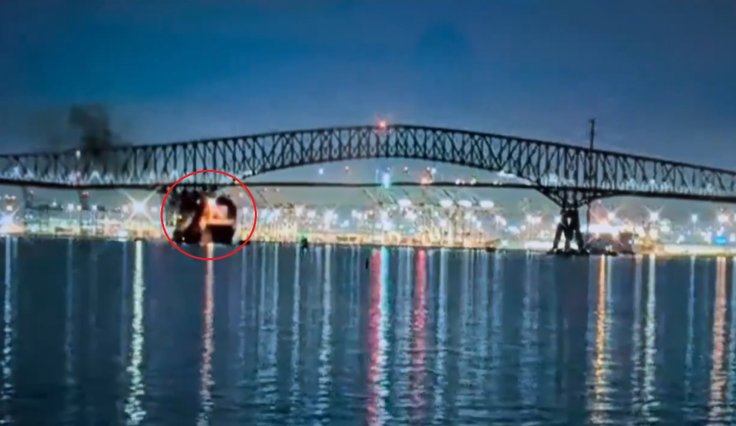
Federal investigators revealed on Tuesday the sequence of events leading to the tragic collision of the cargo ship Dali with the Francis Key Bridge in Baltimore, resulting in the death of six construction workers.
The National Transportation Safety Board (NTSB) provided a detailed preliminary report, shedding light on the incidents preceding the disaster.
According to the report, the ship experienced electrical blackouts approximately 10 hours before departure from the Port of Baltimore and again shortly before colliding with the bridge.
The initial blackout occurred due to a crewmember inadvertently closing an exhaust damper, causing the ship's engine to stall. Subsequently, another blackout during departure led to a loss of steering and propulsion, culminating in the collision with the bridge's supporting column.
Details from the report outline the crew's attempts to manage the power issues while still docked in Baltimore. A comprehensive investigation, anticipated to extend over a year, is underway by the safety board.
Preliminary findings
"The NTSB is still investigating the electrical configuration following the first in-port blackout and potential impacts on the events during the accident voyage," investigators wrote.
Board chair Jennifer Homendy had earlier said, "Our mission is to determine why something happened, how it happened and to prevent it from recurring," at a news conference days after the disaster.
Testing of the ship's fuel indicated no quality-related concerns. Bound for Sri Lanka, laden with shipping containers and supplies for a month-long journey, the Dali's voyage was tragically cut short by the collision.
Following the initial blackout, a backup generator activated but subsequently shut down due to insufficient fuel pressure, leading to a second blackout. Crewmembers then reconfigured the ship's electrical system, transitioning to an alternate transformer and breaker setup before departure.
While the report provides insight into the events preceding the collision, the NTSB refrains from establishing a direct link between the initial power issues and the subsequent blackout. Further investigation into the ship's electrical configuration and its implications on the accident voyage remains ongoing.
Promptly after the collapse, the safety board initiated an investigation, boarding the ship to gather evidence, including data from its engine room. Interviews with the captain and crew members were also conducted.
Moments before collision
The preliminary report delineates the chaotic moments before the collision as crewmembers grappled with successive electrical failures. As the ship approached the bridge, electrical breakers tripped, resulting in power loss and loss of propulsion and steering. Efforts to restore power proved futile as the ship ultimately collided with the bridge.
Tragically, the collapse claimed the lives of six workers who were on break in their vehicles. Rescue efforts recovered the last victim's body recently.
Amid the wreckage, one crewmember miraculously survived by freeing himself from his vehicle, while a road maintenance inspector escaped moments before the bridge collapsed.

A controlled demolition on Monday aimed to clear the collapsed bridge's debris, allowing for the retrieval of the Dali. Investigations are ongoing in collaboration with Hyundai, the ship's electrical system manufacturer, to ascertain the cause of the breaker malfunctions.
The release of the preliminary report by the NTSB offers an initial glimpse into the incident, with a comprehensive investigation expected to yield further insights over the coming year. Additionally, the FBI has initiated a criminal investigation into the circumstances surrounding the collapse.









